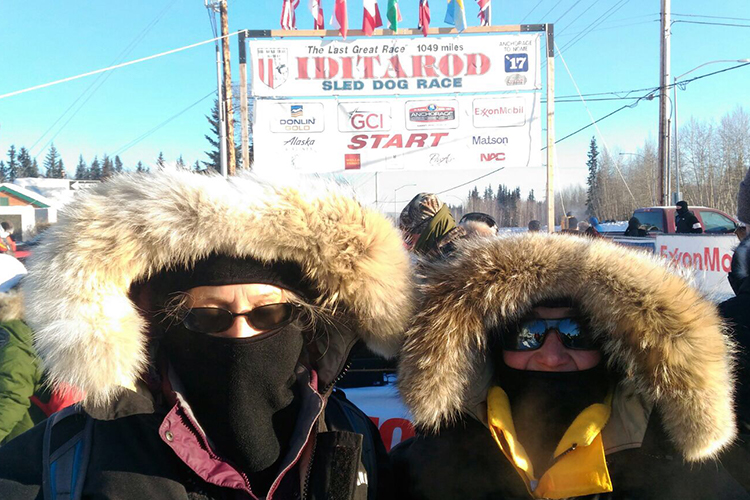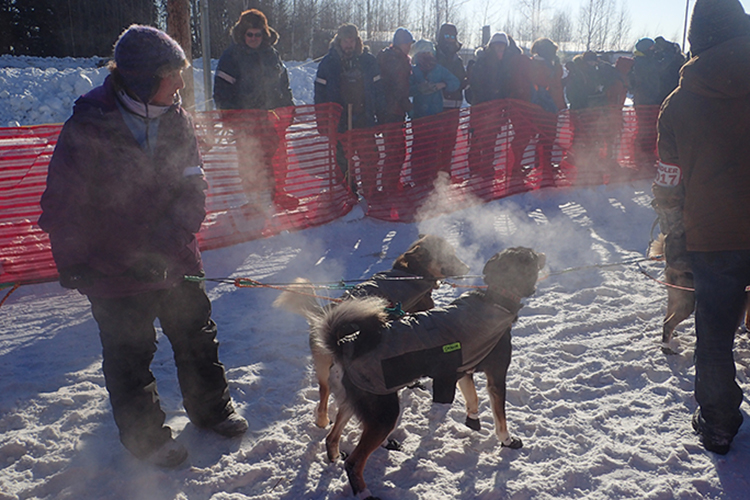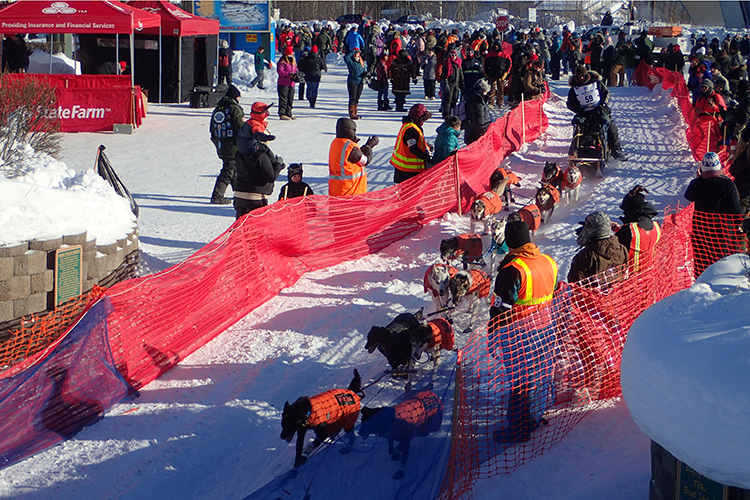2017 Iditarod Winners – Apex Travelers Witness Official Start
Posted by Kevin Clement
in Americas
On our Alaska in Winter expedition, Apex travelers witnessed the Official Start of the 2017 Iditarod at Willow, Alaska on March 5 and cheered on the dog mushers as they took off on their 1,049-mile journey. Expedition Leader, Kevin Clement, reports here on the 2017 Iditarod winners.
2017 Iditarod winners
Tuesday afternoon, as I was making my way back from Alaska, Mitch Seavey roared into Nome to win the 2017 Iditarod in record-breaking time. Since Apex travelers watched the start of this historic race, I thought you might like to hear some observations about its finish.
Mitch’s time over the 1,049-mile course was eight days three hours 40 minutes and 13 seconds. (By comparison, remember that when Mary Shields ran the race in 1974, she took 25 days on the trail.) Mitch beat the previous record, set by his son Dallas last year, by a full seven hours. It’s true that Dallas’ record was set on the usual Iditarod course, starting from Willow, but Mitch also beat the record for the Fairbanks route, set by Dallas in 2015, by half a day.
This marks the sixth year in a row that one or the other of the Seaveys has won. Altogether Mitch has now won three times, Dallas four. Looking at the speeds they clock, theirs are the two fastest dog teams in history, bar none.
At age 57, Mitch is the oldest person ever to win the Iditarod. The person whose record he broke was…himself. He set the record when he won four years ago at age 53.
Battle for second place
Mitch came in more than two hours ahead of his son. The real battle was for second place, between Dallas and up-and-comer Nicholas Petit, who was also putting in extremely fast times. The two were less than two miles apart with 70 miles to go, and finished within five minutes of each other—with Dallas taking second to his father and Petit finishing third.
Dallas knew Petit was breathing down his neck. “I kept checking,” he told Alaska Public Radio. “I saw no sign of him, and then, we stopped for another snack break on the top of Cape Nome, and after I take off, I look back, and he’s right behind me. He’s sneaky, I’ll give him that.”
In Nome, Petit handed Dallas the veterinary log book that Dallas had unknowingly dropped at the last checkpoint. Petit had picked it up to deliver it to him. The log book is a required piece of equipment, and without it, Dallas might have been disqualified. There is a big difference in prize money between second and third places. Although it hasn’t been announced yet, Petit is a likely candidate for this years’ sportsmanship award.
How to win the Iditarod
A few points about the strategies the top three 2017 Iditarod winners employed:
- At the last two checkpoints, according to the GPS tracker, none of the three stopped for more than one minute. This means they paused only long enough to be checked off; they didn’t rest or get into their drop bags for food or supplies. (Had Dallas halted for just five minutes, Petit would’ve passed him.)
- Mitch credits much of his success to his training program, which continues throughout the year. His dogs are not on vacation during the summer, the way most sled dogs are. He considers them to be the athletes, and himself merely the coach of the team.
- He won’t say what his training regime is, but his goal is to have his team in full racing condition by late fall. Most kennels have to wait for winter snow to even begin getting their dogs in shape.
- Probably the most important strategic decision an Iditarod musher makes is where to take his mandatory 24-hour layover—and Mitch chose to take his much later in the race than most of his competitors, pushing through to Huslia. He feels that as a result, his team was fresh and ready for the last leg—and his times were blisteringly fast right up to the finish line.
- You might remember seeing both Seaveys’ custom-designed sleds, with the high-tech doghouses built into the baskets, in Fairbanks. If not, you can review the video I took of Dallas on our Facebook page. The Seaveys have perfected the technique of having some of their dogs ride in the sled to rest, and then rotating them into harness at intervals. At each checkpoint until near the end, each of the Seaveys arrived with two or three dogs riding as passengers. So no one dog runs the entire thousand miles; each might do seven or eight hundred.
- Interestingly, Nick Petit is a staunch opponent of the rotating technique, and thinks it should be ruled out of the Iditarod. All of his dogs ran the entire distance.
And the Race Continues
Although the Seavey dynasty seems unassailable at this point, Petit is definitely one to watch. He says his team is just getting started. “They’re amazing. They’re just 2- and 3-year-old dogs, so watch out, Seaveys, we’re going to get you.”
But the 57-year-old winner has no intentions of letting anyone get him, or of slowing down at all: “And I do feel like I’m getting younger, not older, so as long as this is a thing that interests me the most, this is probably what I’ll keep doing. At some point there might be other things when I grow up, but I’m having so much fun with these dogs. And we’ve turned a corner, like, there’s a whole new world of things we can do. What if we can go even faster?…Who knows?”
So the moral of my Iditarod story could be expressed in the slogan painted on a sign somebody was holding at the finish line in Nome. It read “OLD GUYS RULE!”
Learn more
Kevin has led adventure trips on all seven continents and has guided groups in whitewater rafts, on cross-country skis, by sled dog, and on foot. Learn more about Kevin and his upcoming expeditions.



